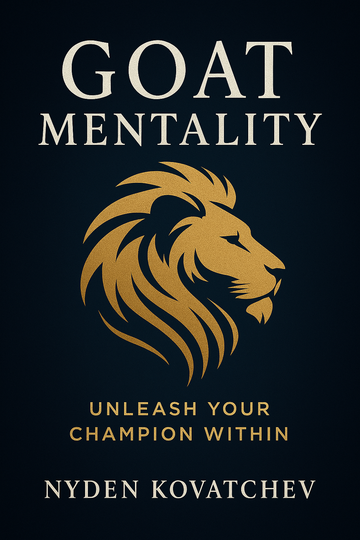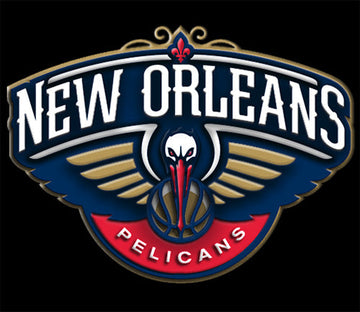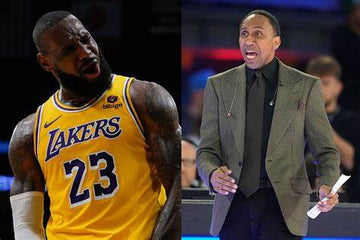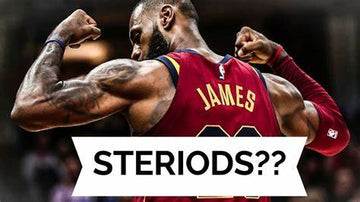Bridging the Gap: Addressing Pay Discrepancies Between Male and Female Athletes
by Nyden Kovatchev on Aug 31, 2024
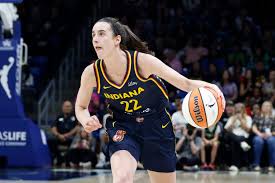
In the world of professional sports, talent, determination, and performance often define an athlete's career. However, another factor—gender—plays a significant role in shaping not just careers but livelihoods. Despite progress in many areas, the pay gap between male and female athletes remains a stark reality. This article delves into the reasons behind these discrepancies, their impact on sports, and the measures being taken to achieve equality.
Understanding the Pay Gap
The pay gap in sports is not merely a disparity but a chasm. For instance, Forbes' 2020 list of the world's highest-paid athletes featured only two women. This gap is pervasive across most sports, from soccer and basketball to tennis and golf.
Historical Context
Historically, sports have been male-dominated, with women often sidelined or outright banned from professional competition. It wasn't until the late 20th century that women began to gain significant entry into various sports at professional levels, thanks in part to legislative changes like Title IX in the United States, which mandated equal funding for both male and female sports programs in educational institutions.
Media Coverage and Revenue
One of the primary arguments for the pay disparity is the difference in revenue generated by male and female sports leagues. Men's sports typically draw more spectators, both in stadiums and on television, which translates to higher advertising revenue, more lucrative broadcasting deals, and greater sponsorship money. For example, the NBA generates significantly more revenue than the WNBA, which is reflected in their salary structures.
However, critics argue that media coverage of women's sports is significantly less, contributing to lower viewership and fewer revenue opportunities. This creates a cyclical problem: less coverage leads to less revenue, which is then cited as a reason for lower pay.
Sponsorship and Endorsements
Sponsorship deals and endorsements can also vary drastically between male and female athletes. Companies tend to invest more in male athletes, seeing them as more "marketable" due to their higher visibility and the larger scale of men's competitions. This disparity extends to prize money in various sports, with men's events often having higher rewards.
Efforts to Bridge the Gap
Various stakeholders in the sports industry have begun to address these inequalities:
-
Legal Action: Athletes like the U.S. Women's National Soccer Team have taken legal routes, suing their federation for equal pay. Such actions not only highlight the disparities but also pressurize sports administrations to reassess their compensation structures.
-
Public Advocacy: High-profile athletes and celebrities have used their platforms to advocate for equal pay in sports, bringing widespread attention to the issue.
-
Organizational Changes: Some sports bodies have started to implement changes, like the World Surf League, which announced equal prize money for male and female athletes in 2019.
Challenges Ahead
Despite these efforts, the road to pay equity in sports is fraught with challenges. Deep-rooted societal norms, traditional gender roles, and the commercial mechanics of sports broadcasting and sponsorship are barriers that require strategic and persistent efforts to overcome.
Achieving pay equity in sports is more than a financial issue—it's a matter of fairness, respect, and equity. As audiences grow for women's sports and their economic footprint expands, the industry must continue to challenge the status quo and champion the cause of equality. Only through collective efforts—from media, sponsors, fans, and athletes alike—can we hope to see a level playing field where athletes are rewarded not by their gender, but by their prowess, dedication, and achievements on the sports field.

Celebrate Your Favorite Female Athlete in Style! Check out Sport Displays and discover our best-selling Jersey Mount—the perfect solution for displaying your jerseys. It's not only easy to install and affordable but also gives your space a professional touch. With the Jersey Mount, you can make every day feel like game day. Visit us at Sport Displays, www.thesportdisplays.com and see how we can elevate your fan experience!
Addressing the pay gap between male and female athletes requires a multifaceted approach, involving stakeholders at all levels of sports, from grassroots initiatives to professional leagues and international governing bodies. Here are some solutions aimed at achieving pay equality in sports:
1. Increased Media Coverage
- Strategy: Amplify the visibility of women's sports through more consistent and prominent media coverage. Media houses can commit to equitable coverage for both genders.
- Impact: Greater visibility increases fan engagement, which can boost ticket sales, viewership, and ultimately, revenue streams that are crucial for funding athletes' salaries.
2. Revenue-Sharing Models
- Strategy: Implement revenue-sharing models that ensure female athletes receive a fair percentage of the profits generated by their performances and their leagues.
- Impact: This helps female athletes earn a wage that reflects the revenue they help generate, making compensation more equitable across genders.
3. Sponsorship and Marketing
- Strategy: Encourage brands and sponsors to invest in female athletes and sports teams equally. Create campaigns that highlight women in sports to enhance their marketability.
- Impact: Increased sponsorship and marketing opportunities can raise the profiles of female athletes, bringing more commercial success and higher wages.
4. Policy and Legislation
- Strategy: Enforce policies or legislation that mandate equal pay for equal work within sports organizations. This could be similar to Title IX in the U.S., but applied more broadly to professional sports.
- Impact: Legal frameworks can compel sports organizations to provide equal pay, creating a more level playing field.
5. Negotiation Training
- Strategy: Provide negotiation training for female athletes to help them advocate effectively for better contracts and sponsorships.
- Impact: Empowering athletes with negotiation skills can help them secure better deals and advance the cause of pay equality.
6. Collective Bargaining
- Strategy: Encourage and support the formation of players' unions in women's leagues that can negotiate collective bargaining agreements similar to those in men’s sports.
- Impact: Collective bargaining agreements are powerful tools for securing contract terms that include fair wages, benefits, and conditions.
7. Educational Campaigns
- Strategy: Run educational campaigns to raise awareness about the pay gap in sports and its impact on female athletes.
- Impact: Changing public perception can increase support for women's sports, pressuring leagues and sponsors to offer equal pay.
8. Equal Prize Money
- Strategy: Ensure that all competitions offer equal prize money for male and female athletes, starting from the highest levels of international and professional competition.
- Impact: Equal prize money sends a strong message about the value of women's contributions to sports and can be a significant step toward broader pay equity.
9. Data Transparency
- Strategy: Encourage transparency in how salaries, bonuses, and endorsements are structured and distributed in sports organizations.
- Impact: Transparency can expose disparities and provide data to support calls for equal pay and treatment.
10. Support from Male Allies
- Strategy: Involve prominent male athletes as allies in advocating for pay equity in sports.
- Impact: Support from well-known male athletes can lend significant credibility and visibility to the movement for pay equality.
Implementing these solutions requires a collaborative effort from all parties involved in sports, including athletes, associations, sponsors, and fans. By addressing the issue from various angles, it’s possible to make significant strides towards achieving pay equality in sports

The Jersey Mount from Sport Displays offers sports fans an exceptional way to showcase their passion. This innovative mounting system is not only easy to install but also incredibly versatile, allowing you to display your jerseys on walls, ceilings, or even inside shadow boxes. Its affordable price point makes it accessible for all fans, while the sleek design ensures that your display looks professional in any setting. Additionally, the unique "game day" feature allows for quick and easy access to your jersey, enabling you to wear it to support your team whenever the moment strikes. Whether you're a seasoned collector or just starting out, the Jersey Mount is the perfect solution for displaying your sports memorabilia with pride.
Overview of Female Athlete Earnings
Female athletes typically earn less than their male counterparts across most sports, which is influenced by various factors including media coverage, sponsorship deals, and the revenue of the sports leagues themselves. However, some female athletes have made significant earnings, mainly through successful performances combined with lucrative endorsement deals.
Top Earning Female Athletes
-
Tennis Players
- Tennis is one of the more lucrative sports for female athletes due to equal prize money at major tournaments like the Grand Slams. Players like Serena Williams have historically topped the list of highest-earning female athletes, with earnings combining prize money and endorsements from multiple brands.
-
Golfers
- Top female golfers also earn from both tournament winnings and endorsements. The LPGA Tour offers lower prize money compared to the PGA Tour, but successful golfers can still secure significant earnings through sponsorships.
-
Gymnasts
- Elite gymnasts, particularly those who succeed at the Olympics, can garner substantial endorsements. Simone Biles, for example, has secured several major deals that significantly boost her earnings beyond competition winnings.
-
Soccer Players
- Women soccer players have been advocating for equal pay, especially high-profile teams like the U.S. Women's National Team. Players like Alex Morgan not only earn through their salaries but also through endorsements and appearances.
-
Track and Field Athletes
- While the prize money in track and field can vary widely, top athletes who consistently win at major championships and secure brand endorsements can achieve high earnings.
-
Basketball Players
- Players in the WNBA earn significantly less than those in the NBA, but top players can supplement their income through overseas contracts where salaries are more competitive and endorsements.
Recent Developments
- Equal Pay Initiatives: Sports like tennis and surfing have made strides towards equal pay, with organizations like the World Surf League offering equal prize money to male and female athletes.
- Advocacy and Legal Challenges: Teams like the U.S. Women's National Soccer Team have engaged in legal battles for equal pay, which has raised public support and awareness about the issue.
- Increased Sponsorship: There is a growing recognition among brands that female athletes embody influential marketing value, leading to more endorsements and thus, higher potential earnings.


